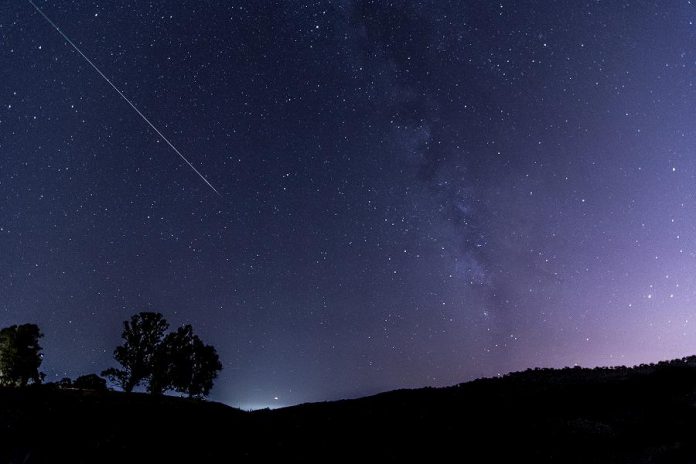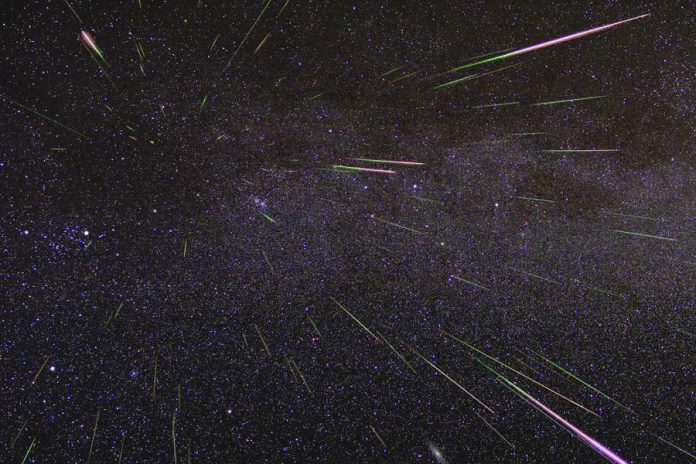
Every August, stargazers and campers look forward with excitement to the annual Perseid meteor shower. This year’s meteor shower will peak overnight tonight (August 11) and on Saturday, August 12th. During the peak, you can expect to see about 80 meteors an hour.
Unfortunately, both the weather and the moon may make for poor meteor spotting this weekend. The forecast in the Kawarthas is mainly cloudy both for tonight and Saturday night. Even if it’s clear, the moon may interfere with viewing, as the moon is still three-quarters full and will rise late in the evening.
If the weather permits, the Peterborough Astronomical Association will host a viewing on top of Armour Hill at Asburnham Memorial Park at 8:30 p.m. on Saturday, August 12th. The event is free and open to the public, with parking available in the lower lot opposite the Peterborough Museum and Archives (for safety reasons, Armour Hill itself will be closed to vehicles). Note that if the skies are too cloudy or if it’s raining, the event will be cancelled.
If conditions are poor for viewing the meteor shower in person, you can always watch it online. Slooh.com will have a live stream on YouTube starting at 8 p.m. on Saturday, August 12th.
If you miss the meteors this weekend, the shower will continue until August 24th — although the meteors won’t be as frequent.
The Perseid meteor shower happens every year from late July to August when Earth plows through the interplanetary debris left behind by comet Swift-Tuttle when it passed close to Earth (the last time was in 1992).
When the particles of debris — which can be as small as a grain of sand or as big as a pea — slam into the Earth’s atmosphere at around 210,000 kilometres per hour, they heat up to 1,650 degrees Celsius and are vapourized in a burst of heat and light, resulting in a “shooting star.”
It’s called the Perseid meteor shower because the meteors appear to originate from the northeast sky in the direction of the constellation of Perseus.

Tips for viewing the Perseid meteor shower
- Find the darkest place you can, away from any light pollution, with as much open sky as possible. Rural areas away from city lights with few buildings or trees are the best. If you can’t get away from your city, find a park or golf course.
- Lie on your back and take in as much of the night sky as possible. You don’t have to face Perseus (to the northeast) to see the meteor shower, but the more sky you can see, the better your chances.
- Be prepared to stay outside for at least an hour. It takes 20-30 minutes for your eyes to adjust to the darkness, and the meteors come in spurts and lulls; so the longer you wait, the more you’ll see.
- Stay awake. The Perseid meteors are typically best between midnight and dawn, with the hours before dawn being the best time.


























